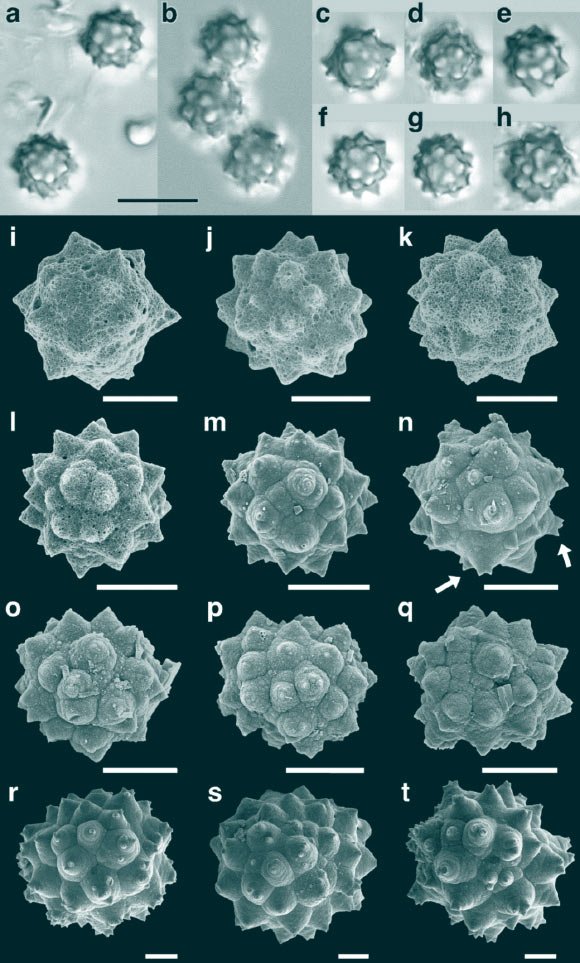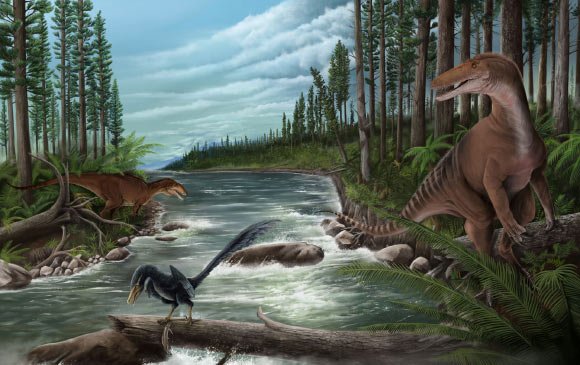Palm trees of the tribe Trachycarpeae once thrived in what is now subarctic Canada, according to an analysis of fossilized phytoliths — microscopic siliceous structures produced in specific tissues by many plant families — from Canada’s Northwest Territories.

Palm phytoliths from the Eocene Giraffe locality (a-q) and modern phytoliths extracted from foliage of the coryphoid palm Trachycarpus fortunei. Image credit: Siver et al., doi: 10.1093/aob/mcaf021.
“Palms are monocotyledonous flowering plants in the family Arecaceae, distributed primarily in tropical and subtropical regions around the world,” said Connecticut College Professor Peter Siver and his colleagues.
“It is a large family, with especially high species diversities found in Central and South America, and in southeast Asia.”
“In general, because palms thrive under warm and wet conditions, the vast majority of species are found in tropical rainforests.”
“Significantly fewer species are found in both southern Europe and southern regions of the United States, and the family is lacking altogether in more northern latitudes.”
“In the subtropical southeastern United States, palms are largely restricted to coastal regions in states along the Gulf of Mexico to Florida, along the Atlantic coast extending north to North Carolina, and a few extending inland to approximately Tennessee.”
“Even though the vast majority of palms are found in climates marked by both high mean annual temperature, and high mean annual precipitation, a few species can be found under cooler and drier conditions.”
Professor Siver and co-authors found fossilized phytoliths from Trachycarpeae trees in ancient lakebed sediments extracted from the Giraffe kimberlite pipe locality in Canada’s Northwest Territories.
Four aquatic organisms, largely restricted to warm subtropical and tropical localities today, were also found in the same sediments.
These 48-million-year-old (Early Eocene epoch) fossils indicate a climate far warmer than previously thought, challenging assumptions about when and where ice first formed in the northern hemisphere.
“The discovery of palm fossils this far north provides clear evidence that the Arctic was once ice-free, with a climate similar to today’s subtropics,” Professor Siver said.
“These findings give us a window into past greenhouse conditions and help refine models predicting future climate change.”
In addition to confirming the northernmost record of palms during this time, the authors also documented, for the first time, fossilized stegmata — linear arrays of phytoliths in palm foliage — establishing that this evolutionary trait had emerged by the Early Eocene.
The presence of multiple warm-adapted aquatic species further reinforces that this prehistoric Arctic region supported a lush, temperate ecosystem.
“Our research contributes to the broader understanding of Earth’s climate history, particularly the extent and timing of ice formation in the Cenozoic Era,” the researchers said.
“By reconstructing these past environments, scientists gain valuable insights into how ecosystems respond to long-term climate shifts.”
The findings appear in the journal Annals of Botany.
_____
Peter A. Siver et al. Palm phytoliths in subarctic Canada imply ice-free winters 48 million years ago during the Late Early Eocene. Annals of Botany, published online February 10, 2025; doi: 10.1093/aob/mcaf021











